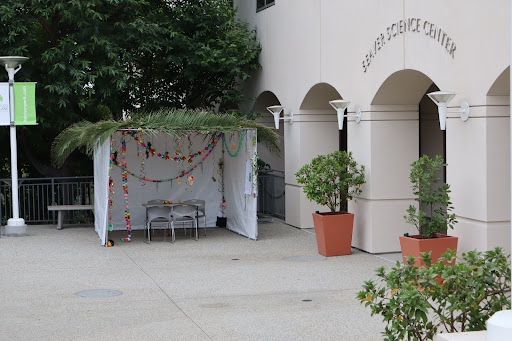The Supreme Court. You have undoubtedly heard of this institution. It is supposed to be impartial and just, deciding how the Constitution should be interpreted. However, in recent years, the Court has become far more politicized, with Court nominations being one of the most important political tools for keeping a party influential, even if they are out of power.
To secure Court supremacy, politicians have begun bringing up the idea of packing the Court, or adding or decreasing its number of members to get a Court that is favorable to one party. Let’s inspect this controversial topic, and see what the pros of it could be, as well as the consequences it could cause.
First let’s take a look at the history of packing the Supreme Court. The Supreme Court was first established with six justices by the Judiciary Act of 1789. John Adams brought this number down to five in 1801, according to the National Constitution Center, but that decision was quickly reversed by Thomas Jefferson the next year.
The size of the Supreme Court stayed at six until 1863 during the Civil War, when Congress changed that number to 10 to give Abraham Lincoln more power over the government as the nation was in crisis. When Andrew Johnson took power after Lincoln’s assassination, Congress shrunk the court back down to seven justices. When Ulysses S. Grant became President in 1869, Congress set the number of justices to nine. It has stayed that number ever since.
In the early 20th century, President Franklin Delano Roosevelt famously tried to add six justices to the Supreme Court but failed. Roosevelt was president during the Great Depression, which was one of the worst economic crises in American History. To help mitigate some of the effects of this crisis, FDR pushed through a series of highly controversial laws collectively known as the “New Deal,” which were designed to ease the economic burden on the common American. He had one problem: the Supreme Court continuously struck down his legislation with a 5-to-4 majority.
To avoid this, FDR proposed his infamous court-packing plan. According to the Smithsonian, for every justice over the age of 70 currently on the bench, a new justice would be appointed and added to the Supreme Court. That meant that FDR would gain six justices loyal to him, and make the Supreme Court greatly in his favor. Unsurprisingly, people saw through this, and it was met with opposition even from FDR’s allies. It was struck down in Congress by a supermajority, but fate smiled upon FDR. One of the justices who had been previously voting against him, Owen Roberts, began to side with FDR on his new deal legislation. FDR soon abandoned the issue. No president has attempted to change the size of the Supreme Court since then.
Much of the power over the Supreme Court was left to Congress in the Constitution. The Founding Fathers knew that the country would change, so they only specified three things: The Supreme Court justices are appointed by the President, the justices will serve as long as they are in “Good behavior” (usually interpreted as life terms) and their salaries cannot be decreased. The number of justices is left to Congress.
Packing the Supreme Court has once again come into politics. President Donald Trump has been given three Supreme Court nominations in his term as President: Neil Gorsuch, Brett Kavanaugh and, most recently, Amy Coney Barett. These appointments have created a solidly conservative court, which will continue to promote Trump’s ideas long after he is gone. In addition, Gorsuch was appointed only because the Republican Senate refused to give a hearing for Barack Obama’s Supreme Court nominee, Meritt Garland, because they wanted the voters to decide which of the Presidential nominees would appoint the justice.
However, Amy Coney Barett just recently took her spot on the bench after Ruth Bader Ginsburg died just a few months before the election. The Republican Party broke the precedent set the previous election cycle, and forced her through, not letting the voters decide.
Due to this hypocrisy, many supporters of the Democratic Party see both Gorsuch and Coney Barett as illegitimate and do not want a possible Democratic President to be hindered by these justices. In addition, Donald Trump did not win the popular vote in 2016, and many Democrats have questioned whether or not he should be able to influence policy for so many years after he is out of power. To avoid this conservative court, some members of the Democratic Party have suggested Supreme Court Reform, some of which is court-packing.
Former Democratic presidential primary candidate Pete Buttigieg suggested during his run that the Supreme Court should be expanded to have 15 justices: five would be Democrats, five would be Republicans and five would be nonaffiliated. These nonaffiliated justices would be chosen by the other five. These final five justices would have 5-year term limits, and they could only serve once. This brings in new blood to the Court, and stops any one administration from permanently shaping the Supreme Court for decades. Buttigieg and his supporters believe that this would make a fair and balanced court, which would give decisions based on the laws of the US, rather than simply along partisan lines.
Joe Biden has also refused to answer questions about packing the Supreme Court, and this has led many to believe that he wants to do it. As the idea is so controversial, and is seen by some in even the Democratic Party as blatantly destroying the checks and balances of the government, it would not be beneficial to come out in support of such a plan so soon before an election.
The Republican Party sees these Democratic plans as an abuse of power. To them, these Supreme Court seats are stolen from Barack Obama, or are stolen from Biden. However, many Republicans think that the Democrats cannot win by the rules, so they have to change them. The Republican Party sees their Supreme Court nominations as their right, and that it should not be tampered with.
There is also an issue when it comes to Supreme Court size around the fact that there is nothing stopping another President from adding more justices. Every President, if they have a supportive congress, could just add more justices to make the Supreme Court stand by them no matter what. This can void the point of even having a Supreme Court in the first place.
All in all, this Battle over the Supreme Court is just another sign of increasing divisions within our political system. We have two sides, who are unwilling to talk to each other, and refuse to compromise. The Democrats are willing to go to drastic measures to try and gain influence over the Government, while the Republicans remain stubborn and contradict the precedent they themselves set. Things will only get worse if we, as citizens, refuse to talk to each other. Quite frankly, the Supreme Court does not matter. It is the polarization of our democracy that is the most dangerous threat.
.





